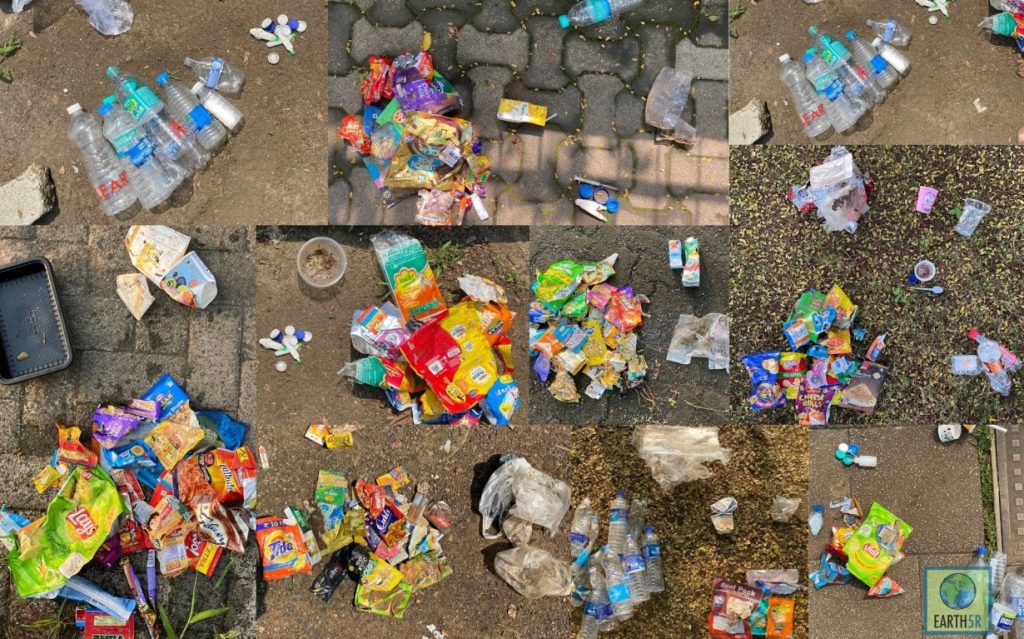
The Undeniable Plastic Waste Situation In Navi Mumbai, India
The deepest point in the ocean, the Mariana Trench and the highest mountain peak in the world, Mt. Everest, have only one particular thing in common, Plastic. Plastic initially solved many problems in the 19th century but it soon turned out into a crisis. Plastic management has today become an issue of global concern.
Therefore, as a stepping stone in the effort towards finding a solution to this dire plastic waste situation, Earth5R created a project called the “Know Your Plastics” Project. In this project, a volunteer goes to 10 different locations in their locality and within 5 minutes collects as much plastic as they can. After the waste is collected, it is segregated into six different categories: MLP(multi-layer packaging), PET( Polyethylene terephthalate) plastics, LDPE(Low Density Polyethylene), HDPE(High Density Polyethylene), Tetra packs and Synthetic fibers. Any other waste found on site such as medical waste is included in the “Other” category.
The data collected from this segregated plastic waste is then analyzed to better understand the plastic waste situation of the city.
Cleanup And Segregation In Navi Mumbai
Earth5R volunteer Sushil Patra carried out 10 sampling activities across his city Navi Mumbai. By executing a project called KnowYourPlastic which is an activity of just 5 minutes.
The results that came out were quite surprising:
- Multi layered plastic constituted 52% of the total plastics.
- Followed by PET bottles and Polythene bags with similar share of 14% and 13.5% respectively
- HDPE constituted 6.8% among others and uncategoried items constituted 11%.
“The city is only visibly clean, things are getting buried under the carpet”– SUSHIL PATRA, EARTH5R VOLUNTEER @NAVI MUMBAI
Navi Mumbai which boasts to be the third cleanest city in India has tremendous amount of plastic waste hidden in the lush greenery vastly spread across the city. The durability of plastic and the fact that it is a convenient option is the driving force behind plastic pollution. The story is no different even in the Himalayan belt like in the city of Dehradun. The plastic crisis in India in particular has only deepened with passage of time.
Packaging Is A Major Contributor To The Global Plastic Waste Situation
To find a solution for this menace, researchers have identified some industries who depend on plastic the most.
According to the data shown above:
- Packaging industry produces most of the plastic on the planet
- Followed by building construction and textiles
The Effect Of Plastic On Humans And The Planet
It has been seen that plastic has a multi-dimensional impact, which includes, environmental impact, social impact, economic impact and even an impact on health. Ironically, a country’s GDP is directly affected by the plastic pollution. Since single use plastic takes thousands of years to degrade, it contaminates the land and water which can cause serious health issues. No wonder, the time has come to invest in sustainable solutions rather than just exploiting the resources.
“Plastic waste — whether in a river, an ocean, or on land — can persist in the environment for centuries.”UNEP
Plastic In Oceans: A Growing Concern
Discarded plastic reaches every nook and corner of the planet through any means possible, but its effect is most visible in the marine environment. Every year, almost 8 million tonnes of plastic is dumped in the oceans. Most of them are brought by rivers like Nile, Indus, Mekong etc.
According to UN Environment Programme, if current trends continue, our oceans could contain more plastic than fish by 2050.Plastic accounts for atleast 85% of the total marine waste globally and is expected to increase three times in the next two decades.
The Role Of Effective Recycling
The solution lies in effective recycling of plastic. According to researchers from the University of California & others, only 9% of the plastic waste produced between 1950 and 2015 was recycled globally. To increase the percentage of recycling of plastic a multi-pronged approach is required that would include all the stakeholders like the producers, the users, the consumers, the governments, research institutions and the citizens. A similar example is demonstrated the earth5R through its circular economy model.
The Global Recycled Plastic Market report 2020-2024 says that the recycled plastic industry is set to accelerate at 7% growth rate in the coming years and the rise is driven by the demand of recycled plastic by the packaging industry, which is apparently also the largest producer of it.
“Everyone wants to exercise their right to use natural resources but it is also important that they fulfil their duty to protect the environment, the ecosystem, the earth”SUSHIL PATRA, EARTH5R VOLUNTEER @NAVI MUMBAI
Reviving The Environment Through Circular Economy
Circular economy model around plastic will not only revive the environment in particular, it will also fulfil other United Nations Sustainable Development Goals such as reducing poverty, reducing inequalities, economic growth, sustainable cities, rejuvenation of life below water and revival of life on land among others.
SDGs linkages through effective plastic waste management (Source: NITI Aayog)
It is time to implement solutions at hand, great and small, with urgency, innovation, commitment and accountability. Like Sushil Patra, anyone can spare at least 5 minutes each day and execute the KnowYourPlastic activity and provide reliable data, based on which a circular economy model can be created.
Reported by Sushil Patra; Edited by Krishangi Jasani




